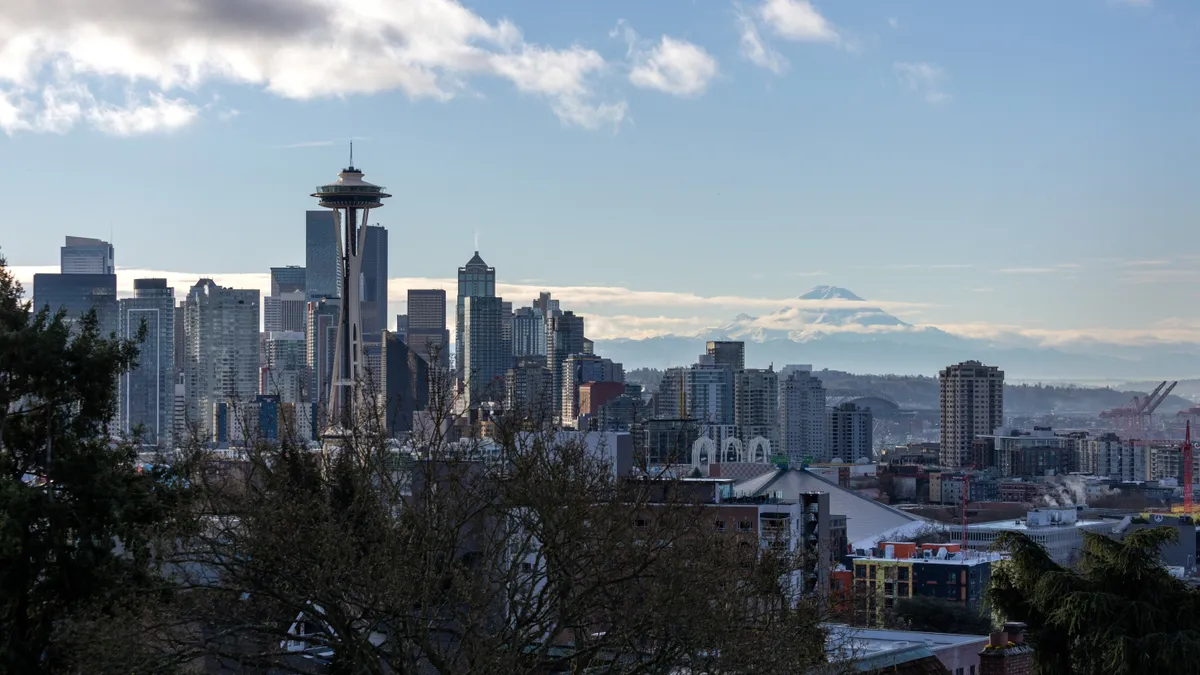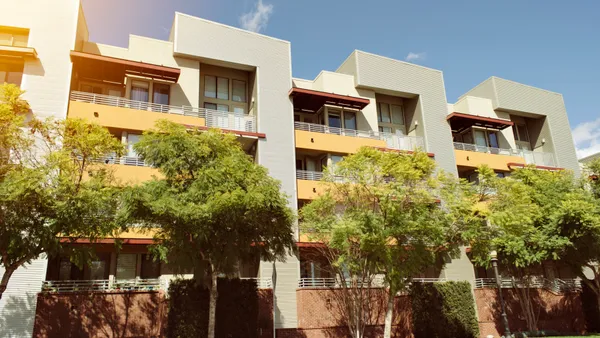On MAA’s second-quarter earnings call in early August, CEO Eric Bolton said the Memphis-based REIT was “in the midst of what’s clearly record levels of new supply coming into our market.”
Judging by Bolton's comments from the REIT’s Q3 earnings release and investor call last week, the worst of the storm has passed.
“We believe that peak deliveries of new supply that are impacting our submarkets and properties occurred this past third quarter,” Bolton said.
Despite that record high Q3 supply, Bolton said that MAA was “able to capture solid performance in occupancy, record low resident turnover, strong collections and better-than-expected performance with operating expenses.”
Given its third-quarter performance, MAA raised its effective rent growth guidance by 15 basis points to 0.35% and lowered its midpoint same-store revenue growth guidance for the year to 0.5%. New supply still provides a headwind, especially in certain markets, but that picture could improve next year.
Supply and demand
Challenged by high supply, MAA’s same-store new lease rents declined by 5.4%, a drop lower than expected, Alexander Goldfarb, managing director and senior research analyst for investment bank and financial services company Piper Sandler, said in a report.
However, 10 of MAA’s 15 highest-concentration markets showed new lease-over-lease growth acceleration from Q2 to Q3. The REIT’s renewal prices rose 4.1%, producing a negative 0.2% blend for Q3. Tim Argo, MAA’s chief strategy and analysis officer, said various demand metrics that the company tracks remain strong.
“Sixty-day exposure [representing current vacancies and notices over the next 60 days] is better than at any point over the last five years,” Argo said. “The seasonal deceleration of new lease pricing is less than the prior year and pre-COVID periods, and absorption remains strong.”
Only 16% of the REIT’s leases are set to expire in the slower winter leasing season. MAA’s average physical occupancy was 95.7%, up 20 basis points from Q2.
“Absorption remains strong in our markets, with the third quarter representing the first time since the first quarter of 2022 that units absorbed exceeded units delivered,” Argo said. “Therefore, there is not a significant backlog of inventory needing to be absorbed.”
Struggles in Austin
On the Q3 call, Argo noted that Atlanta and Jacksonville, Florida, were markets that continued to be negatively impacted by supply. However, Austin, Texas, remains MAA’s most challenging metro.
BY THE NUMBERS
| Category | Q3 | YOY Change |
| Property revenues | $523.5 million | 0% |
| Net operating income | $327.3 million | -1.7% |
| Operating expenses | $196.3 million | 3% |
| Funds from operations | $2.10 | -2.8% |
| Rent per unit | $1,691 | 0.4% |
| Occupancy rate | 95.7% | 0 bps |
SOURCE: MAA
“If you … just exclude Austin from our Q2 and Q3 performance trends on new lease pricing, our new lease pricing in Q3 would have been up 10 basis points from where it was in Q2,” Bolton said. “So Austin clearly is having an outsized impact on the portfolio right now.”
On the other hand, mid-tier metros like Savannah, Georgia; Richmond and Fredericksburg, Virginia; and Charleston and Greenville, South Carolina, outperformed the broader portfolio from a blended lease-over-lease pricing standpoint.
Overall, Bolton is beginning to see conditions that indicate MAA’s markets will improve next year.
“We expect to see normal seasonal leasing patterns for the next couple of quarters and remain convinced that the spring leasing season will usher in the start of a recovery cycle with more favorable leasing conditions as demand and absorption trends across our markets remain strong and the volume of new supply deliveries steadily declines,” Bolton said.
Click here to sign up to receive multifamily and apartment news like this article in your inbox every weekday.





































